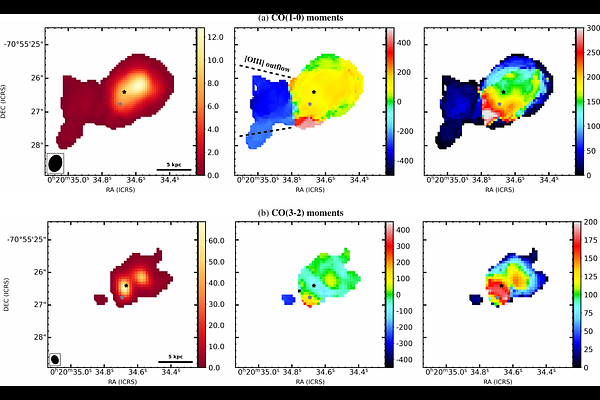The link between galaxy merger, radio jet expansion and molecular outflow in the ULIRG IRAS 00183-7111

The link between galaxy merger, radio jet expansion and molecular outflow in the ULIRG IRAS 00183-7111
Ilaria Ruffa, Marilena Spavone, Enrichetta Iodice, Santiago Garcia-Burillo, Timothy A. Davis, Kazushi Iwasawa, Henrik W. W. Spoon, Rosita Paladino, Michele Perna, Cristian Vignali
AbstractThe ultraluminous infrared galaxy (ULIRG) IRAS 00183-7111 ($z=0.328$) is one of the three ULIRGs that are currently known to host an active galactic nucleus (AGN) with young radio jets. We present a detailed study of the link between galaxy merger, AGN ignition, radio jet expansion and galactic-scale molecular outflow in IRAS 00183-7111, using high-resolution Atacama Large Millimeter/sub-millimeter Array (ALMA) observations of the $^{12}$CO(1-0) and $^{12}$CO(3-2) lines and very deep $i$-band VLT Survey Telescope (VST) imaging. The latter allows us to put - for the first time - tight constraints on the assembly history of the system, confirming that it formed through a major merger between two gas-rich spirals, likely characterised by a prograde encounter and no older than 2 Gyr. The recent merger channelled about $(1.0\pm0.1)\times10^{10}$ M$_{\odot}$ of molecular gas in the central regions of the remnant, as traced by the CO detections. The spatial correlation between the CO distribution and the radio core suggests that this gas likely contributed to the ignition of the AGN and thus to the launch of the radio jets, which are no older than 2 Myr. Furthermore, by comparing the relative strength of the two CO transitions, we find extreme gas excitation (i.e. $T_{\rm ex}\gg50$ K) around the radio lobes, supporting the case for a jet-ISM interaction. A qualitative study of the CO kinematics also demonstrates that, despite the overall disturbed dynamical state with no clear signs of regular rotation, at least one non-rotational kinematic component can be identified and likely associated to an outflow with $v_{\rm out}\approx 556$ km s$^{-1}$ and $\dot{M_{\rm out}}\approx 110$ M$_{\odot}$ yr$^{-1}$.